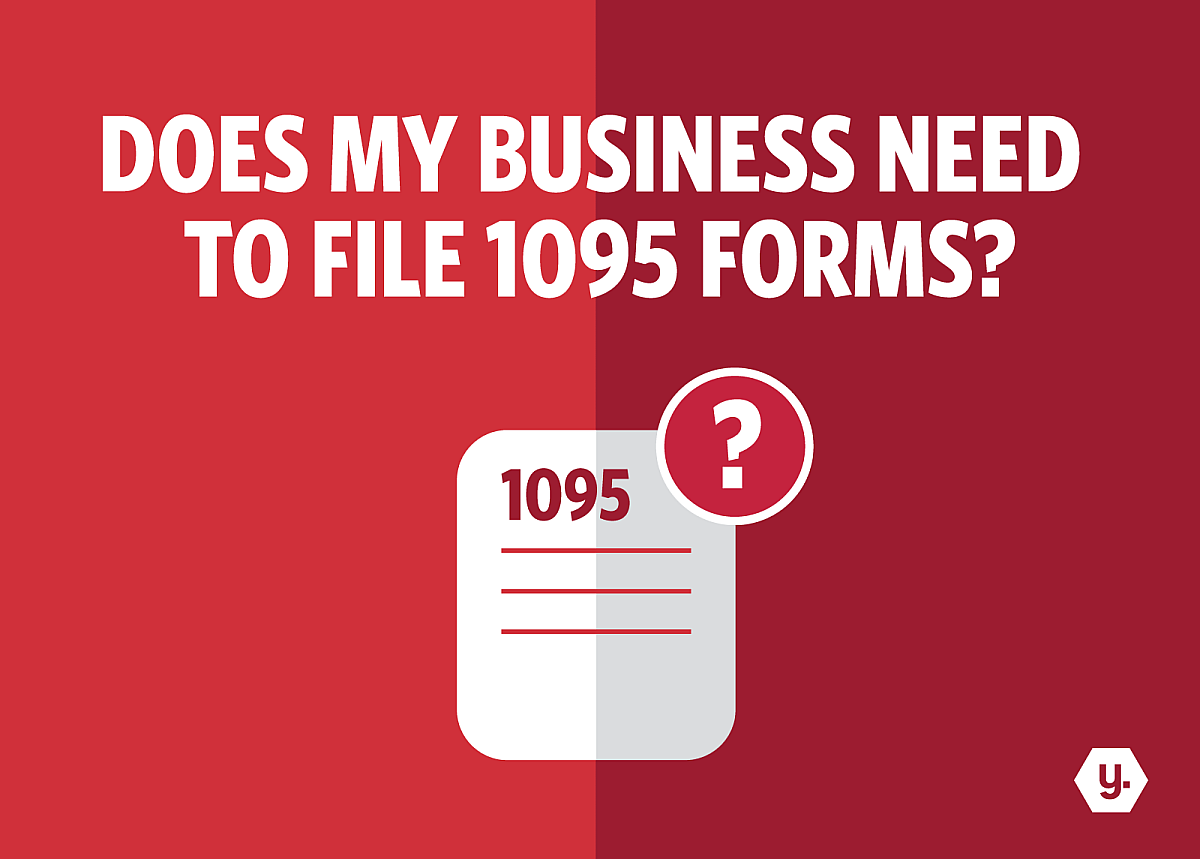
State of the Filing Season: What You Need Know
The legislative and regulatory landscape continues to evolve and keeping up with the changes can be an uphill struggle. With changes in federal regulations and shifts in state filing, making sense of it all can be overwhelming for today’s taxpayers.
Underscoring this point, a small business tax survey conducted by the National Federation of Independent Business (NFIB) Research Center found that federal income taxes posed the biggest administrative burden on business owners (64 percent), as well as state and local income tax (58 percent).
Given the tax burden felt by businesses, it is not surprising that more than 90 percent of survey respondents said they use a tax professional to prepare and submit their taxes. Why? Compliance and complexity of tax laws were cited as the leading reasons (65 percent and 59 percent, respectively).
From earlier filing deadlines, to increased reporting requirements, to the potential for new e-filing thresholds, the revolving door of changes shows little signs of slowing. Keeping pace can no doubt prove challenging.
What’s driving the changes? The IRS’ ongoing efforts to reduce the tax gap through increased tax compliance and combat fraud are among the leading factors.
“The reason behind all of these changes is to increase tax compliance and to prevent fraud. So, for example, by accelerating the due dates, IRS now has information earlier from which it can compare to the data that is reported on income tax returns to identify fraudulent returns. Increased reporting, such as in the case of the 1099-K, also helps to ensure tax compliance because it has been proven that compliance increases when there is associated information reporting,” said Janice Krueger, subject matter expert for Greatland, which provides W-2, 1099 and 1095 filing solutions through its online reporting platform Yearli.com.
Earlier Filing Deadlines
In line with the IRS’ effort to detect and combat fraud, a federal law enacted several years ago accelerated the annual deadline for filing copies of employees' Form W-2 with the Social Security Administration (SSA).
The Protecting Americans from Tax Hikes (PATH) Act requires that employers file their copies of employees' Form W-2 with the SSA by Jan. 31. This also applies to Form 1099-NEC, which records non-employee compensation.
Previously, employers had until the end of February, if filing via paper, or the end of March, if filing electronically, to submit their copies of these forms.
Furthermore, Forms W-2 and 1099-NEC do not qualify for an automatic extension of time to file so it is especially important to meet the deadline. The only exception is in the unfortunate case of a catastrophic event, which requires the filing of Form 8809 Application for Extension of Time To File Information Returns.
The IRS does allow for an extension to file if the filer meets one of the five criteria outlined on Form 8809. Some of the criteria listed are:
- The filer suffered a catastrophic event in a federally declared disaster area that made the filer unable to resume operations or made necessary records unavailable;
- Fire, casualty, or natural disaster affected the operation of the filer; and
- Death, serious illness, or unavoidable absence of the individual responsible for filing the information returns affected the operation of the filer.
Navigating State Filing
Most states have Forms W-2, 1099, and, in some cases, 1095 filing requirements that are separate from federal filing requirements, which can be confusing and burdensome for some businesses.
Without the right tools and resources in place, businesses may find themselves in non-compliance and hit with unwelcome fines and penalties. This includes having a comprehensive reporting platform that provides direct state filing services.
“Many filers find a vendor that supports the Combined Federal/State Filing program and then think that all of their state filing requirements are being met and, unfortunately, that’s just not the case,”Krueger.
The problem is that the Combined Federal/State Filing program has many limitations, compared with direct state filing services, and businesses need to be certain that the data is received by the state agencies in a timely fashion, and meets all state filing deadlines and reconciliation requirements. To be more specific, consider the following:
- The Combined Federal/State Filing program only supports a subset of the 1099s, not all of the 1099 forms. Also, there is no Combined Federal/State Filing Program for Form W-2 or 1095. These two form types must be filed directly to the state.
- Not all states support the Combined Federal/State Filing Program, and of those that do support the Combined Federal/State Filing Program, most, if not all, require any 1099s that report state withholding to be filed directly to the state.
- Many states require a reconciliation form to be sent when submitting 1099s to their state. The Combined Federal/State Filing Program does not support any reconciliation forms.
Rising Penalties
Meanwhile, penalties continue to climb. Businesses that fail to file, or correctly file, year-end reporting forms can face penalties. At first glance, the penalties may seem minimal but they can quickly add up, especially in light of penalty increases slated for 2023.
Information returns — which include Forms W-2, 1099-NEC and 1095 — are important cross-checking tools the IRS uses to help curb fraud and ensure that taxpayers are reporting and paying the accurate amount of tax.
It is important to keep in mind that penalties can apply for both failure to file to the IRS and the SSA, as well as failure to furnish correct payee/recipient statements. For instance, if a business fails to file a correct Form 1099-MISC with the IRS and doesn’t provide a correct Form 1099-MISC statement to the payee, it could be subject to two separate penalties.
As noted earlier, penalties can add up quickly, and the amount of the penalty is based on when the correct form is filed. Let’s take a closer look.
For returns due Jan. 1, 2023 through Dec. 31, 2023, the penalties for both failure to file and failure to furnish the correct information returns by the due date are as follows:
- $50 per information return if you correctly file within 30 days; maximum penalty $588,500 per year ($206,000 for small businesses);
- $110 per information return if you correctly file more than 30 days after the due date but by Aug. 1; maximum penalty $1,766,000 ($588,500 for small businesses);
- $280 per information return if you file after Aug. 1 or you do not file required information returns; maximum penalty $3,532,500 per year ($1,177,500 for small businesses);
- Intentional disregard of filing requirements. This means failure to file a correct information return is due to intentional disregard of the filing or correct information requirements. The penalty is at least $580 per information return with no maximum penalty.
Are You Prepared to E-File?
The IRS is proposing to reduce the number of returns that a business can prepare before e-filing is required for information returns like W-2 and 1099 forms. While the fate of the proposal remains unclear, businesses, including smaller employers, should be prepared.
In July 2021, IRS proposed regulations that would lower the e-file threshold for information returns from 250 returns to 100 returns for the initial tax year, and then further reduce that to 10 returns for the following tax year. These regulations apply not only to Forms W-2 and 1099, but also to Form 1042-S, 1095 series, 1098 series, and 5498 series forms.
Secondly, the proposed regulations eliminate the non-aggregation rule. Currently, the 250-return threshold is based on form type. Under the proposed regulations, the filer would combine the total number of forms to be filed and, if the total is more than the e-file threshold number, then all forms would have to be filed electronically regardless of the number per form type.
Furthermore, the proposed regulations require corrections to be filed in the same manner that the originals were filed. This means that if a filer submits originals on paper; corrections must be filed on paper as well. If a filer submits originals electronically; corrections must be filed electronically. Failure to file a correction in the same manner as the original was filed would result in penalties.
A public hearing was held on Sept. 22, 2021 to listen to comments and it appears the IRS is still in the process of determining if any changes should be made to the proposed regulations before finalizing.
When the threshold is lowered to 10 returns, this change, if adopted, will impact a significant number of filers, especially since the non-aggregation rule will be eliminated.
“One of the reasons behind the proposal to lower the e-file threshold is to gain processing efficiencies and save money. It is much more costly to process paper returns than it is to process files sent to the agencies electronically. Secondly, it takes much longer to process paper returns. When filing electronically, IRS has information earlier from which it can compare to the data reported on income tax returns in order to identify fraudulent returns,” Krueger said.
If the lower e-file threshold is adopted, there are two parties that would see the greatest impact.
- Filers who currently file information returns on paper would see the most impact when the lower e-file threshold is adopted because they would have to find a vendor that provides the necessary e-filing services. To minimize impact, paper filers should consider e-filing now before the agency requires them to do so.
- Agencies will see a great impact when they will no longer have to process a significant number of paper information return
To help keep pace with all of the changes, consider turning to a comprehensive online 1099 and W-2 reporting platform like Yearli.com by Greatland. Yearli.com was built with compliance in mind, and also has experts who are available by phone, chat, or email to help businesses ensure compliance in the midst of change.
Latest News
-
 November 25, 2025
November 25, 2025New Alternative Furnishing Method for Forms 1095-B and 1095-C Comes with Complexities
The IRS has updated the Affordable Care Act (ACA) reporting process for Forms 1095-B and 1095-C. These changes aim to reduce administrative costs and simplify reporting, but they also create new compliance challenges for employers and health insurance providers.Read More -
 October 8, 2025
October 8, 2025Your Business Guide to 1099 Filing in 2025: Deadlines and Compliance Tips with Yearli
Businesses must prepare for 2025 IRS 1099 filing by understanding key deadlines for Forms 1099-NEC and 1099-MISC and leveraging e-filing tools like Yearli to stay compliant. This guide outlines important dates, recent IRS updates, and practical tips to avoid penalties and streamline the filing process.Read More -
December 30, 2024
Understanding Form 1099-DA: A Comprehensive Guide to Filing for Digital Asset Transactions
As the use of digital assets like cryptocurrencies and non-fungible tokens (NFTs) continues to grow, so does the need for clear tax reporting guidelines. To address this, the IRS has introduced Form 1099-DA, which will be required starting in 2025.Read More
